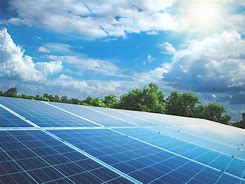Solar energy is the energy produced by the sun’s heat and light. When the sun’s energy is transformed into electricity or used to heat air, water, or other substances, solar power is created. Solar energy can be utilised to make hydrogen and other solar fuels for Landlord solar that can be implemented for regular use.
By the end of 2020, more than 700 GW of solar energy would have been built around the world, supplying around 3% of global electricity demand. It is definitely a sustainable step speaking about the solar for tenant.
Each year, more solar PV energy is added than any other source of energy generation, owing to dramatic cost reductions in recent years. The global levelised cost of energy (LCOE) for large-scale solar fell by 85% between 2010 and 2019.
Have you ever been curious about how solar panels convert sunlight into electricity? And, on a gloomy day, how does shade effect a solar photovoltaic (PV) system?
New solar power generation methods are being developed all the time, however there are two major techniques to generate solar power:
- Photovoltaic solar panels
- Thermal energy from the sun
How does solar power work?
Solar photovoltaic
Solar photovoltaic (also known as solar PV) uses a semiconductor cell or solar PV cell to convert sunlight directly into electricity.
The most popular type of solar PV cell is enclosed in glass and held together by an aluminium frame to form a solar panel. One or more panels can be used to power a single light, to cover the roof of a home for residential use, or to form a large-scale solar farm capable of generating hundreds of megawatts of power.
Solar PV panels are now the most widely used type of solar PV technology, although other varieties of solar PV, such as PV that can be integrated into buildings, flexible PV, and even PV paint, are being developed for specific uses.
Solar thermal
Solar thermal energy is created by converting sunlight into heat (also known as thermal energy), which can be utilised for a variety of reasons, including making steam to power an electricity generator. This energy might be used to power a refrigeration cycle, allowing for solar-powered cooling.
Solar thermal technologies are divided into two categories.
Thermal technology on a small scale is used to heat space or water (such as in a solar hot water system).
Solar thermal concentrating captures the sun’s heat for large-scale electricity generation. It works by reflecting sunlight onto a device called a receiver, which then transfers the heat to a thermal energy storage system via a field of mirrors. The stored energy can then be released as needed.
What happens on a cloudy day?
Shade can be mitigated with more advanced panels and inverters, so talk to your solar retailer about it.
While you can’t control the shade cast by clouds, you should place your panels in an area free of shadows cast by other objects like trees and buildings. If this isn’t an option, you might be able to split your solar panels across different portions of your roof that face different directions. To get the top of the line results with this setup, you’ll need an inverter that can accept numerous inputs. This is something that your solar installer can help you with.
In addition, bypass diodes are included in many current solar panels. By allowing energy to ‘flow around,’ these devices lessen the effects of partial shading.
Did you know?
In 2020-21, solar PV generated almost 10% of Australia’s electricity, making it the fastest-growing generation type in the country.
Rooftop solar PV is now installed on more than 30% of Australian homes, with a total capacity of more than 11 GW.
Large-scale solar farms are also becoming more common in Australia, with about 7 GW of capacity connected to the national grid.

